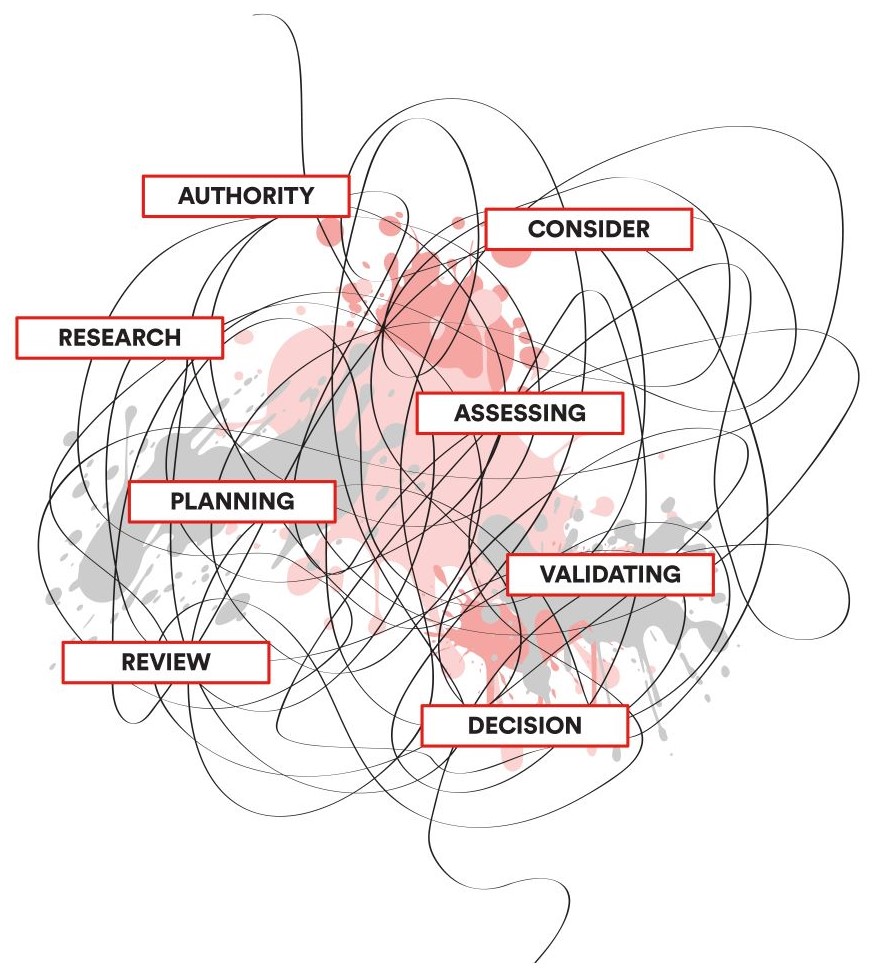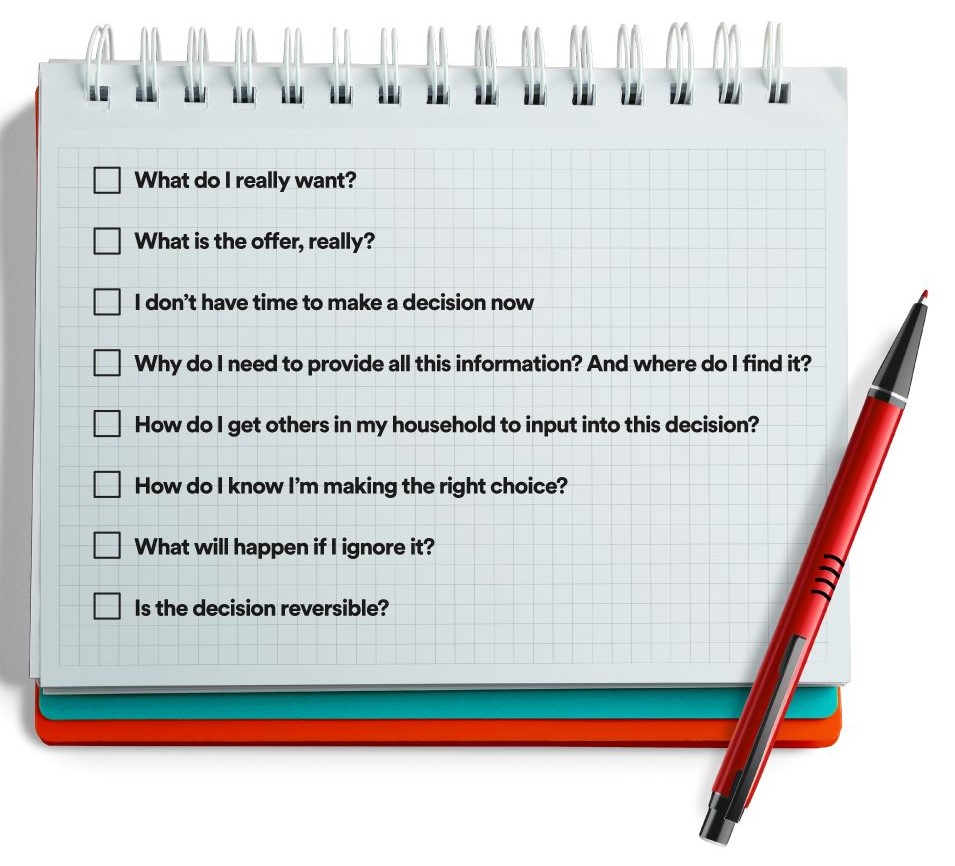How mail can guide consumers through the messy middle of decision making
Discover how mail can transform your marketing by guiding consumers through the 'Messy Middle' of decision-making. In this article by self-proclaimed ‘Herdmeister’ and behavioural economist Mark Earls, you'll learn how to understand and address the nuances of consumer behaviour, enabling marketers to greatly enhance their effectiveness and achieve better results.
Effectiveness

All too often, I hear marketers talk about marketing and advertising as something that they do to audiences - whether it’s an old fashioned media blitz or a hyper precision intervention using more modern technology. Neither of these are appropriate - as all good marketers have always done - from the point of view of the customer. We should be helping customers, not blasting them into submission or surgically removing their cash. We should be useful to them, first and foremost. Remember: the discipline of marketing has always been fundamentally about identifying and leading the organization to solve the needs of the customer, not merely managing marketing comms or heading to Cannes.
Nowhere is this more obvious than in the kind of complex decision making that is typical of so many consumer markets: as the digitisation of marketing activity has revealed, there’s a world between hello and thank you! The ‘Messy Middle’ as Google and the Behavioural Architects called it. The middle of these kinds of decisions is often more like a game of snakes and ladders (as researchers Fiona Blades and Stephen Phillips noted) than a stately procession along a well-lit and welcoming path to purchase. That is not to say that it is not worth thinking long and hard about the simpler consumer journeys and less complex decisions, like…toilet roll but that is for another day.
The middle is messy in many of these bigger decisions - in travel, personal finance, energy supply, healthcare and so on - because they represent genuine difficulty for consumers to do them well. Not because consumers are ignorant or wilful but rather because our human mental abilities are not well-evolved or designed for choosing a holiday involving three different hotel options, four flight times, two adults and three possible four children (depending on which friend is coming along) and three different dates. Certainly not to make that choice in the rational and straightforward way that we’d like to pretend consumers do (because that’s what it says on our customer journey template) or that they’d like to pretend they do (when we ask them in surveys or focus groups).
This is where the latest Marketreach report on the Messy Middle comes in: If you understand the complex reality of bigger consumers decision, you can quickly find places where you, the marketer, can help; second, we show how mail is an effective channel for solving these consumer pinch points in the Middle of more complex journeys.

Here comes the behavioural science for marketers
The last 20 years has seen a real explosion of marketers learning about human decision-making and how our minds work to help or hinder us in doing so. Our minds are amazing products of millions of years of evolution but they don’t work in the way we imagine they do.
Here are three principles that I find useful in thinking about these more complex decisions.

First, we humans aren’t as good at considered thinking as we tell ourselves we are. The human mind is to thinking as cats are to swimming: we can do it if we really have to, but will deploy all kinds of tactics and shortcuts to avoid doing so. Most of the time this is very useful and an energy and time-efficient approach, but when decisions are complex and the consequences (personal or financial) loom large, it can fail us.
What to do? Simple: make it easy and don’t make your audience think too hard. Help them by making comparisons simple, clear and appropriate. Express value in their terms not yours (but please try to avoid London buses, football fields or areas being “the size of Wales”).
Second, humans are not great at thinking about the future. Future gains in favour of what we have now. We find it hard to imagine our future selves and what we might value, want or need. “We all tend to devalue future gains in favour of what we have now. You might know this better as a-bird-in-the-hand-is-worth-two-in-the-bush”.
What to do? Again, help them. Inspire them with what the future might look like and what it might feel like to inhabit it. Don’t make them do the hard work of imagining the future and how much they will enjoy and value (even treasure) the future they choose. Help them see and feel different options, don’t just give them information and make them do the heavy lifting themselves.
Third, we are a fundamentally social species (not just a species of lone wolves who enjoy a bit of now and again). Our decision-making - for things big and small - is often shaped socially, rather than being the result of an individual thinking and considering independently of others. At the simplest level, we use other people’s brains to shape our choices - as the immortal line has it in “When Harry Met Sally”, “I’ll Have What She’s Having” has it. Beyond this, there are all kinds of social considerations - what does this choice say about me and mine? What are the social norms round here? What should I not choose? Many complex decisions are more explicitly social in that they involve several individuals, balancing their interests, needs and priorities in the final choice.
What to do? At the simplest level, help the audience see what their friends and peers are thinking and doing. At a more sophisticated level, you could give them the tools to share and collect feedback from other people involved in the decision.
How mail can help you help your customers in the messy middle.
There is already abundant evidence that as a medium mail can have an important impact on the middle of consumer journeys.
Mail’s unique brand in the hand physicality - as a letter, catalogue, postcard - has an amazing ability to create emotional impact. It can simplify detailed information and help readers engage with detail they might not otherwise be able to, making comparisons and evaluation simple. Mail doesn’t require an immediate response - it can and is kept in the home and referred to as the dance of the messy middle evolves. And it can be a social object - to share ideas and options with others involved in the decision making. The latest research study, with Walnut Research Limited, reveals some other important aspects of mail’s impact in the middle of customer journeys, compared to other, digital options For example, Mail scores particularly well on moving those early signs of consideration that keep your brand in the game in the middle. Mail is also strong at generating trust, a factor so important in decisions with large consequences (from holidays to healthcare). It is better at generating word-of-mouth and - if yours is a message that deals with something that really matters to the audience e.g. the health of our loved ones or the energy we use - then mail cuts through well beyond its digital competitors.
The more practical question is when and how.
The messy middle is a tangle, not a straight line. And the consumer is faced with many challenges that they are not suited for. While we’d like to imagine there is an order to the questions the consumer asks themselves, this is very often not the case: expect them to come in any order and indeed to be looped back and asked again at a later stage. This is the messy middle after all.
To help you help them navigate through complex decisions, here is a simple schematic of the kinds of question that consumers wrestle with. Some seem obvious but many are less so when you are on the other side of the fence.

My advice is this: work out where the pinch points are for your audience in their journey (each category and brand will have slightly different versions of this list so be sure to adjust for your specific situation). Then set out to solve those problems in the best way possible. Given what we’ve discussed above, you’ll find, again and again, that Mail’s tangible qualities make it the ideal partner for marketers looking to help their customers in the middle and build trust.
Conclusion: All too often in the modern world, marketing gets a kicking for any number of evils. What if we refocused our efforts on helping consumers around the barriers and the blockers, the stresses and the strains of making the decisions they want to . What if we found ourselves being useful? As part of you marketing mix, mail is the ideal partner in the messy middle and so much more.
Discover more about mail and the messy middle in our report here.
About the author:
Mark Earls is a recovering account planner who was one of the very early pioneers applying behavioural economics to the business (the first to publish Daniel Kahneman's System 1 & 2 model in the industry. He is also an award winning writer best known for his books like HERD, I'll Have What She's Having, Copy Copy Copy and Creative Superpowers. Mark is a Fellow of the RSA, the Marketing Society and an Honorary Fellow of the IPA. He now advises organisations around the world, helping them to harness insights into human behaviour to bring to life the change they want to see.
Further reading
- Thinking fast and slow (2011) Daniel Kahneman, Penguin
- Stumbling on Happiness (2007) Daniel Gilbert, Vintage
- To prepare for the next Pandemic, we must be timelords (2021) Mark Earls, Tortoise online
- Messy Middle report
- Mail is Trusted
- Mail Cuts Through



